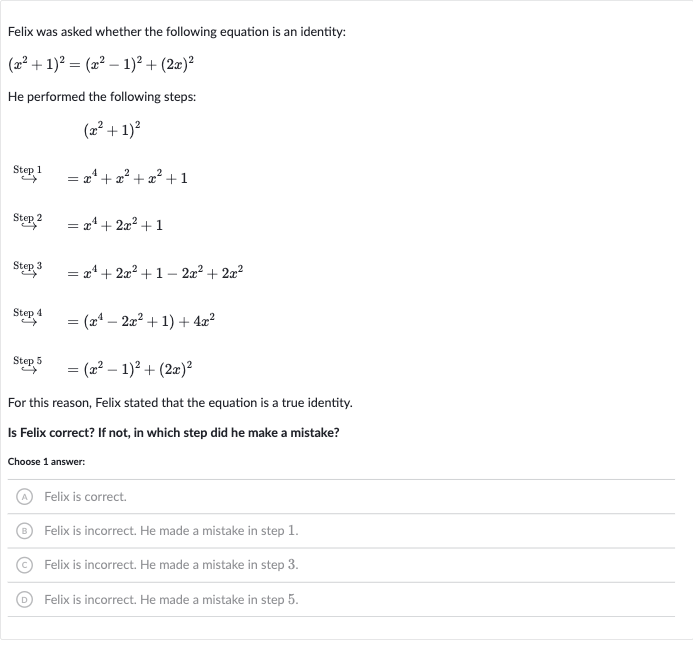AI tutor
Welcome to Bytelearn!
Let’s check out your problem:

Felix was asked whether the following equation is an identity:He performed the following steps:For this reason, Felix stated that the equation is a true identity.Is Felix correct? If not, in which step did he make a mistake?Choose answer:(A) Felix is correct.(B) Felix is incorrect. He made a mistake in step .(C) Felix is incorrect. He made a mistake in step .(D) Felix is incorrect. He made a mistake in step .
Full solution
Q. Felix was asked whether the following equation is an identity:He performed the following steps:For this reason, Felix stated that the equation is a true identity.Is Felix correct? If not, in which step did he make a mistake?Choose answer:(A) Felix is correct.(B) Felix is incorrect. He made a mistake in step .(C) Felix is incorrect. He made a mistake in step .(D) Felix is incorrect. He made a mistake in step .
- Expand Left Side: Expand the left side of the equation .Calculation:
- Expand Right Side: Expand the right side of the equation .Calculation:
- Combine Like Terms: Combine like terms on the right side.Calculation:
- Compare Expanded Forms: Compare the expanded forms of both sides.Calculation: Left side = , Right side =
- Determine Identity: Determine if the equation is an identity.Calculation: Since both sides are equal, the equation is an identity.
More problems from Solve linear equations with variables on both sides: word problems
QuestionGet tutor help
